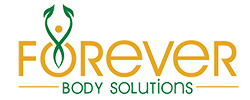The Best Wines for Your Waistline

1. Check the ABV
While there are no actual nutrition labels on bottles of wine, there is one indicator you can use to approximate calories: the Alcohol by Volume (ABV) percentage. ABVs can range from 9 percent for low-alcohol wines up to 17 percent for some dry wines. "Aim for an ABV that's between 9 to 12 percent, which equals 110 to 140 calories per six-ounce pour," Puckette says. The amount of alcohol in wine has more influence on calorie count than carbs, since alcohol has seven calories per gram, while carbs (i.e. sugars) have four. So a lower-alcohol wine has fewer calories than higher-alcohol wines, independent of the amount of sugar.
2. Buy European
"A smart tip to keep in mind is to lo
ok for European wines from regions like Italy, France, and Germany," Puckette says. These countries tend to have stricter laws and regulations on alcohol content in wines than America, so European wines tend to be lower in alcohol and, hence, calories. "Also try to avoid wines grown in warmer regions like Chile or Australia, where higher sugar content in grapes converts to higher ABV in wines," she adds.
3. Stick with white
In general, white wines tend to be lower in alcohol and calories than reds. "While light whites have around 140 calories or less per six-ounce glass, a light red has between 135 to 165 calories, while a higher-alcohol red like pinot noir or syrah can have up to 200 in a glass," Puckette says. Light white varieties such as Riesling, pinot grigio, and vinho verde have fewer calories than whites with higher ABVs like moscato, Chardonnay, sauvignon blanc, and viognier.
Light and effervescent, a glass of bubbly seems like the perfect summer drink. But be sure to check the label for a "brut nature" or "brut zero" designation, which signifies that hardly any extra sugar has been added. Puckette explains, "While all sparkling wines have a certain amount of sugar, which is necessary for the fermentation process that creates the bubbles, I'd suggest sticking to brut nature varieties of Champagne, Cava (the Spanish version of champagne), and sparking wine from the U.S. These regions have stricter rules about added sugar than Italy, where prosecco is produced." One five-ounce glass of brut nature Champagne has around 120 calories, compared to around 175 for a sweet (aka "doux") Champagne.
Stocking up for the summer? Here are Puckette's top three picks for delicious, refreshing, lower-calorie wines for the warmer months:
1. German Kabinett or Spatlese Reisling: Thanks to strict alcohol and sugar regulations in Germany, these wines have only 7.5 grams sugar per bottle and are very low-alcohol (about 9 percent ABV). A cold glass of Reisling is sweet and refreshing, a perfect summertime drink.
2. French Rosé from Provence or Languedoc: These dry, fruity roses are also very low in alcohol, around 11 percent ABV. If you like a richer wine, rosés are a nice alternative to red wine in the warmer months.
3. Italian Lambrusco: This light, slightly sparkling red wine is a great option for summer if you are a fan of red wine. Remember, red is always a smart choice too, even if tends to be slightly higher in calories, as it's a great source of beneficial antioxidants and polyphenols.
Article provided by Shape.com

